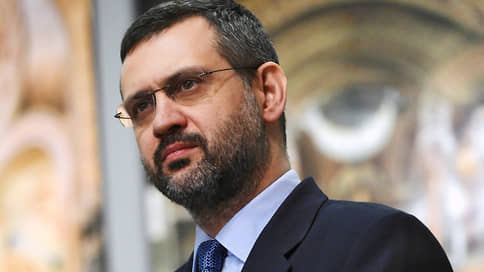Column by Vladimir Legoyda on the 15th anniversary of the enthronement of Patriarch Kirill
[ad_1]

The Primate of the Russian Church was elevated to the throne of Moscow high priests 15 years ago. Much has changed in the church since then. It is impossible to say in a short text about all the results of the patriarchal ministry over these years. At the same time, temple construction is undoubtedly one of its semantic centers.
I remember that when the implementation of “Program 200” began—that’s what the program for building new churches in Moscow was called back then—various questions were asked. Where can I get funds? Who will go there? Wouldn’t it be better to do something else? Etc. This media background, I must say, was very noticeable. What can I say, in those years it seemed to me that some counterarguments were not without foundation… But life has shown that this was the right goal, which was achieved through the efforts of many people inspired and mentored by the patriarch. Currently, as a result of this program, 164 new churches have appeared in Moscow (opened or under construction). An impressive number.
I would like to remind you that His Holiness was born in 1946 and the pictures of destroyed churches are vivid in his memory, which, undoubtedly, was told about by his father and grandfather, who lived through the most difficult times of the atheism. However, churches were blown up later, during the so-called Khrushchev Thaw. So, in 1964, in the center of the capital, the Church of the Transfiguration of the Lord, which kept the banners of the Preobrazhensky Regiment, was blown up at night. The first chairman of the Department for External Church Relations, Metropolitan Nikolai (Yarushevich) of Krutitsky and Kolomna, served in this church. People of this generation understood that it was necessary to heal the wound that was inflicted on our people by the massive, barbaric destruction of temples. This mission fell to the lot of Patriarch Kirill. Of course, churches were restored under Patriarch Alexy II, but then the church, which was just reviving after many years of persecution, did not have the resources for large construction projects. Of course, there are exceptions (Cathedral of Christ the Savior), but they only confirm the rule.
Church building has become a truly common cause, an effective form of church-state and church-public interaction. Everyone knows how difficult it is to build permanent buildings in megacities: high costs, approvals – all this delays implementation. In addition, the temple, unlike a residential complex or shopping center, does not bring commercial profit. Therefore, motivation can only be intangible, and thousands of caring people united around it. Over the years, specialized construction organizations, entire communities of church architects, icon painters, and mosaicists have appeared. Temple building has truly become a cultural phenomenon, which, unfortunately, is not visible enough in the public space.
But in this space they wrote a lot about the unfortunate “local residents” who allegedly suffered mental suffering from the appearance of a temple next to their home. I remember how these “local residents,” of whom there were maybe a hundred in all of Moscow, moved from one construction site to another. And they put notices in mailboxes that the appearance of a temple in the yard would certainly lead to the fact that the dead would be brought there for funeral services, and that the yard would house a population of homeless people and beggars who would attack children and pets. None of this happened. Moreover, the patriarch has repeatedly said that the church is open to finding alternative sites for construction. But, as a rule, protesters were not interested in compromise, but in the opportunity to earn political points.
The main temple-fighting “prophecy” that has not come true is the “prophecy” about empty temples. There are no empty churches in Moscow. There are none in other cities either. Especially those built in new areas, built during Soviet times or today. The convenience of going to church on foot, with children or grandparents together, was fully appreciated by the vast majority of residents of large cities. The temple became not only a place of worship, but also a space for all kinds of sections, cultural and social initiatives, educational courses, and in some places even cafes opened. It turned out that the new church is always immediately filled with people. The number of priests has also increased, which means that each parishioner can receive more attention. But just 15 years ago, on major holidays, it was simply impossible to squeeze into some churches in Moscow.
Most of the world’s megacities are dominated by business and shopping centers, and it seems that all these cities are similar to one another and have no other function than making a profit. In Russian cities, behind modern buildings, here and there you can see the domes of churches, reminding us who we are, what we believe in and what we live for. This is our identity, carved in stone.
[ad_2]
Source link








